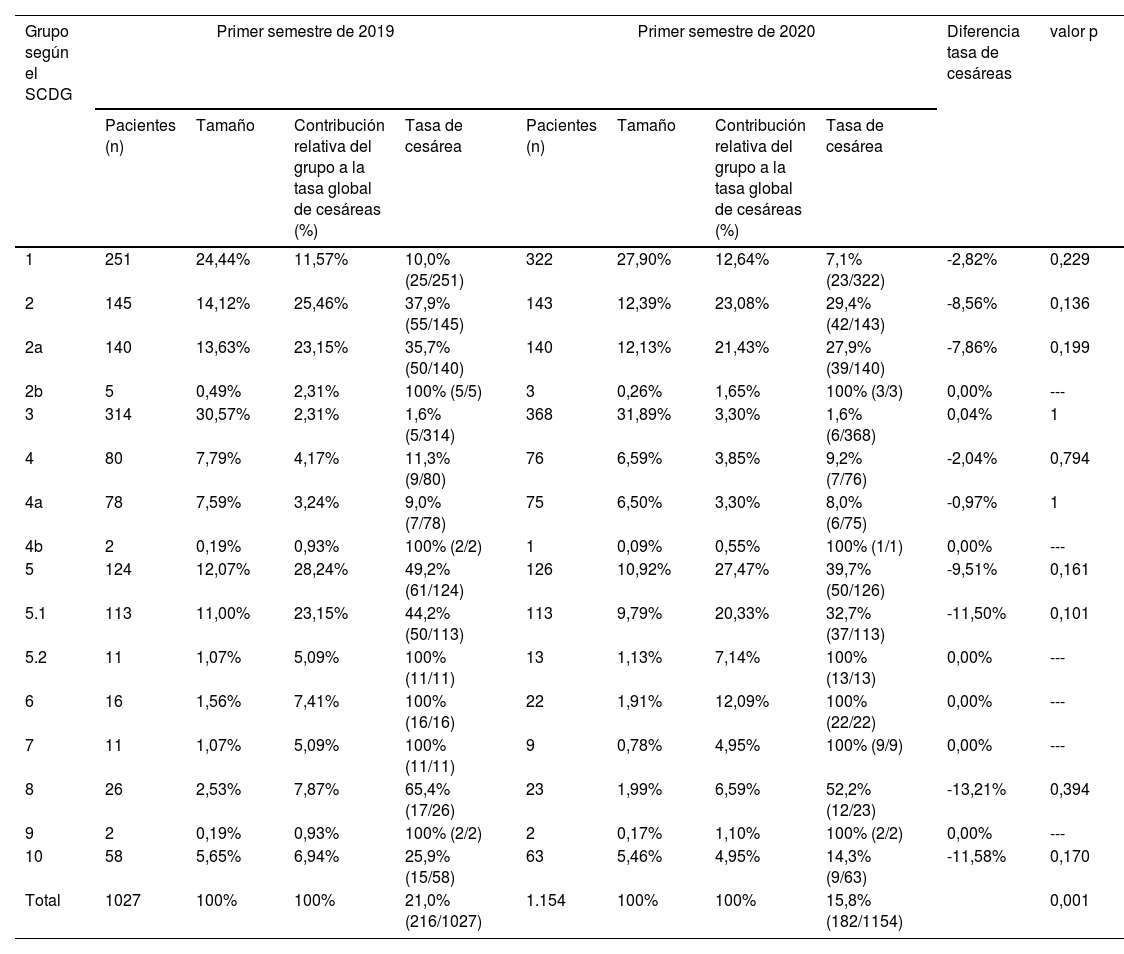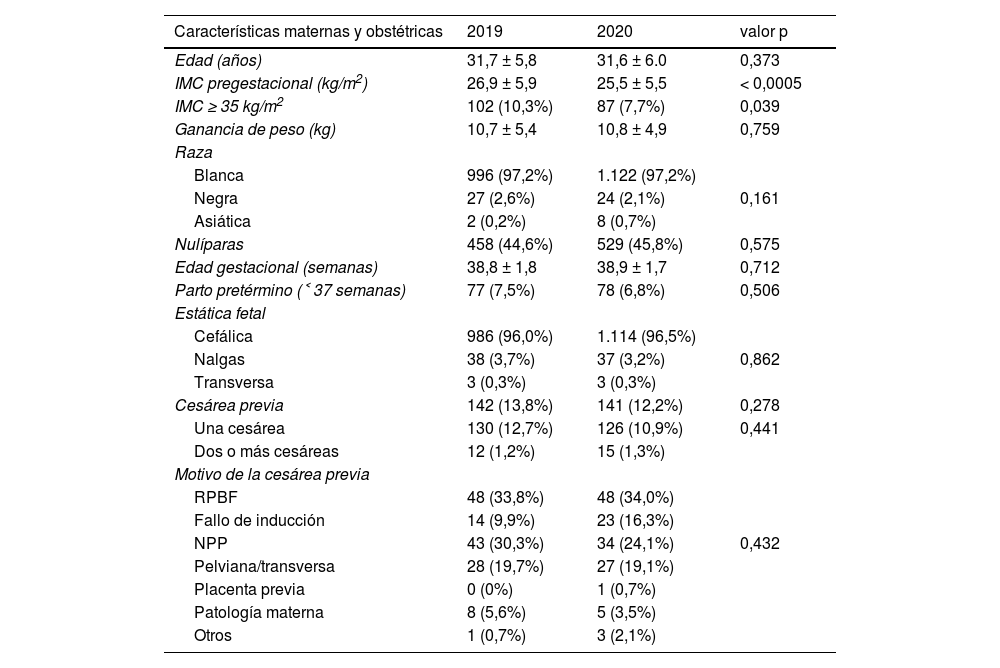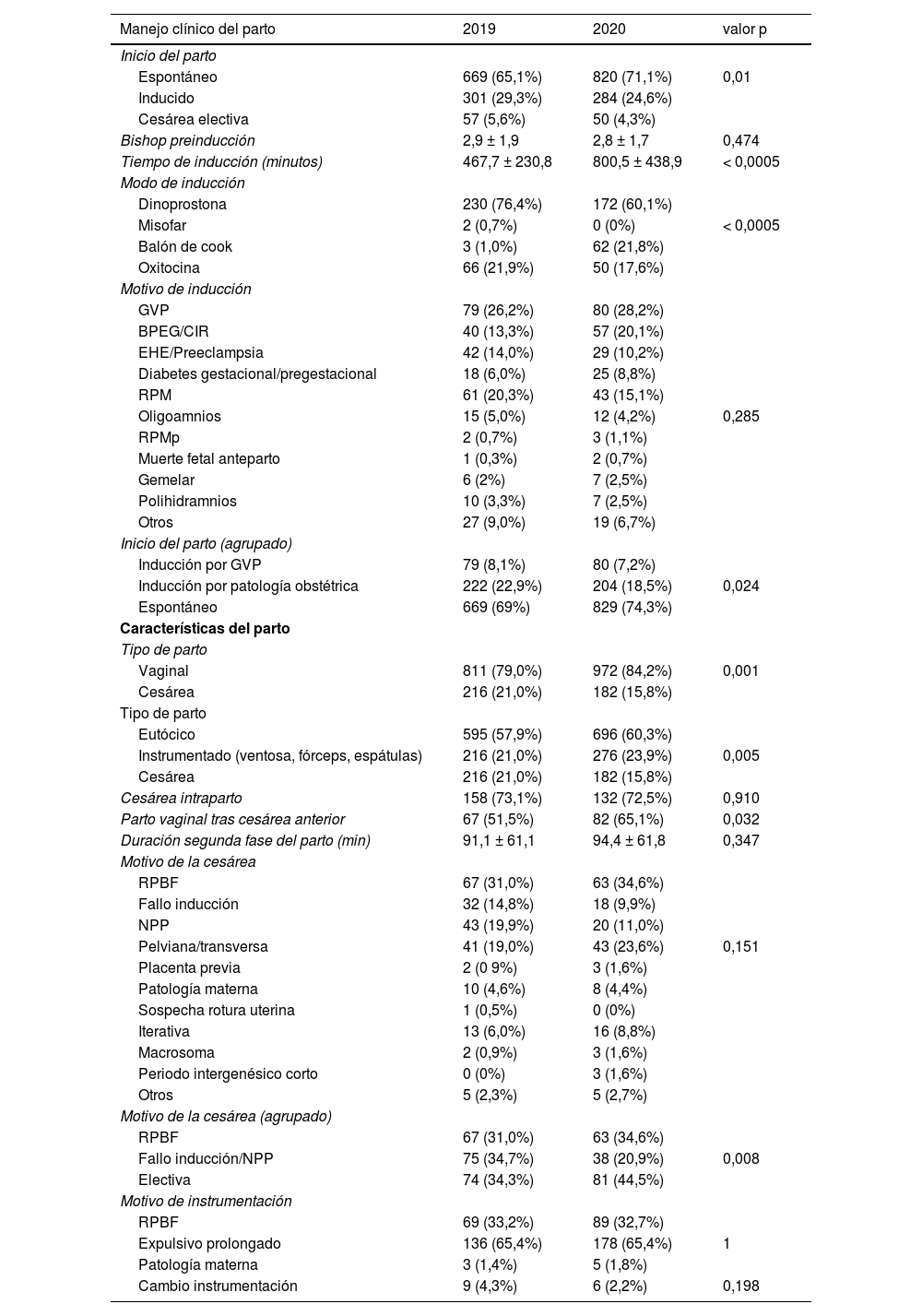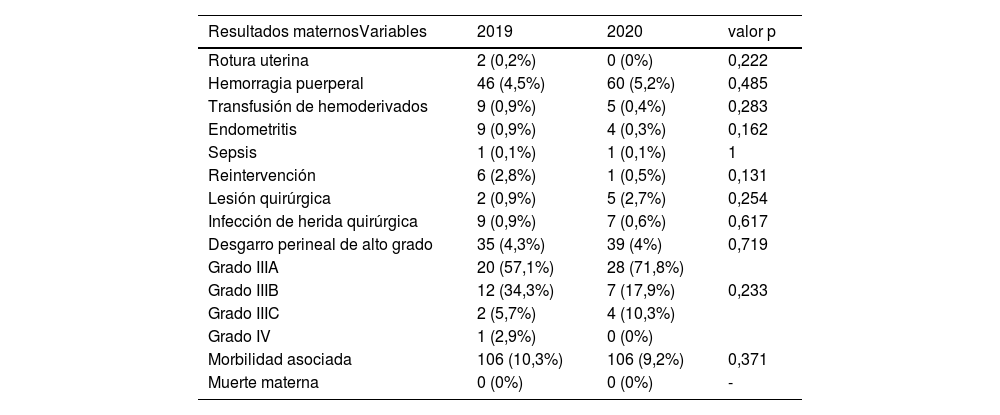La tasa de cesárea es un motivo de controversia y la clasificación de Robson es un método de estandarización que evalúa las causas de esta. En nuestro trabajo analizamos si las medidas de mejora de manejo prenatal e intraparto implementadas tras la revisión de Robson suponen un descenso de índice de cesáreas sin incrementar los de morbimortalidad neonatal y materna.
Material y métodoEstudio cuasi experimental antes-después, entre 2019 y 2020, con un total de 2.181 pacientes con parto en el Hospital Universitario de Valme (1.027 en el grupo 2019 y 1.154 en el de 2020).
ResultadosObservamos que se produjo una disminución estadísticamente significativa de la tasa de cesárea entre 2019 y 2020 (21 vs. 15,8%; p = 0,001) sin ser relevante la reducción en ningún subgrupo de estudio. Hubo un menor índice de parto inducido (29,3 vs. 24,6%; p = 0.01), un aumento en la tasa de parto vaginal (79 vs. 84,2%; p = 0,001) tanto de eutócicos como instrumentales (57,9 vs. 60,3%; 21 vs. 23,9%; p = 0.005) y una baja estadísticamente significativa de la de cesáreas por fallo de inducción o no progresión del parto (NPP) (34,7 vs. 20,9%; p = 0,008). En las inducciones mediante balón de Cook observamos una disminución del índice de cesárea (45,3 vs. 22,2% p = 0,001). Hallamos que redujo el porcentaje de ingreso en la Unidad de Cuidados Intensivos Neonatales (UCIN) (10,5 vs. 7.6%; p = 0,016) y la morbilidad neonatal global (11,4 vs. 8,2%; p = 0,013) sin encontrar diferencia en los resultados maternos.
ConclusionesLa aplicación de la clasificación de Robson puede ser un método útil para identificar grupos que requieran de medidas específicas destinadas a estandarizar el manejo de las pacientes, con lo que se permite reducir la tasa de cesáreas.
Cesarean section rate is controversial and the Robson classification is a method for standardizing the evaluation of the causes of cesarean section. The aim of this study was to evaluate whether the measures to improve prenatal and intrapartum management implemented after the Robson classification evaluation lead to a decrease in the rate of cesarean sections without increasing the rates of neonatal and maternal morbidity and mortality.
Material and methodQuasi-experimental study before-after,between-2019 and 2020, including a total of 2181 patients with delivery at Hospital-Universitario-Valme(1027 patients in Group-2019, and 1154 patients in group-2020)..
ResultsWe observed that there was a statistically significant decrease in the cesarean section rate between 2019 and 2020 (21.0% vs 15.8%; p = 0.001) without the decrease being significant in any study subgroup. There was a lower rate of induced labor(29.3% vs 24.6%; p = 0.01), an increased rate of vaginal delivery (79.0% vs 84.2%; p = 0.001), both eutocic and instrumental deliveries (57.9% vs 60.3%; 21% vs 23.9%; p = 0.005) and a statistically significant decrease in the rate of cesarean sections due to failure of induction or non-progression of labor(34.7% vs 20.9%;p = 0.008). In inductions using the balloon-Cook we observed a decrease in the rate of cesarean section (45.3% versus 22.2% p = 0.001). We found a decrease in the percentage of admission to the Neonatal ICU (10.5% vs 7.6%; p = 0.016) and global neonatal morbidity(11.4% vs 8.2%; p = 0.013) without observing a difference in maternal outcomes.
ConclusionsThe application of the Robson classification can be a useful method to identify groups that require the application of specific measures aimed at standardizing the management of these patients, thus allowing to reduce the rate of cesarean sections.












